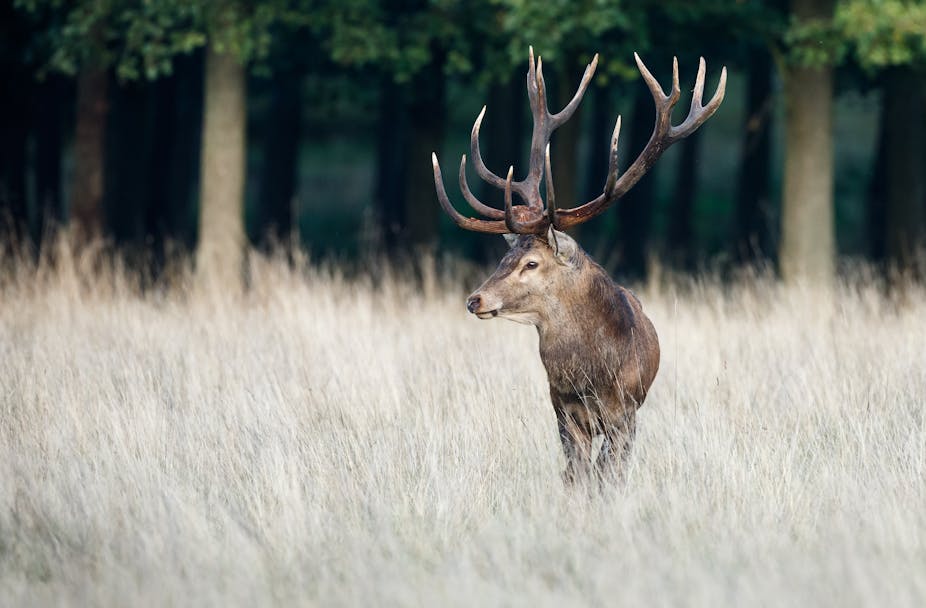Red deer are the largest surviving native land mammals in the British Isles. Over the centuries, wolves, bears, elk and wild cattle have all been driven to extinction, but deer have persisted. Though they are now limited to the margins of the modern world, in the past these animals played a central role in human life and, somehow, unlike other large mammals, endured.
It is easy to understand how deer arrived at some of the remote places on the British mainland where they now thrive, but questions arise over how the animals on the distant Scottish islands of Orkney and the Outer Hebrides got there. Deer are known to be good short distance swimmers, but the isles are thought to have been separated by wide and deep sea channels from the mainland for as long as Britain itself has been an island. Today, other than deliberate introductions, these outer isles still have only a few terrestrial species, such as otters and rodents.
The archaeological record shows that deer appeared on the Scottish isles at the same time as humans arrived, so could there be a link between the two? Evidence for the first insular human and deer populations on these islands dates back to the Neolithic, some 5,500 years ago, a time when the first farmers were establishing themselves in Britain. These farmers spread across to the islands, taking with them domestic cattle, sheep, pigs and crops, as well as wild deer. By releasing the deer, settlers developed a new, less labour intensive food supply that could supplement farming, and provide valuable antler – but just how did they do it?
Deer movement
In our recent study, we combined archaeological skills with genetic research, to understand how our ancestors moved deer to and from the islands. The results were unexpected.
We attempted to match DNA sequences from ancient deer bones found across Scotland from different times, with the populations of deer living on other nearby places, such as the Scottish mainland, Norway and Ireland. By including deer from the Bronze, Iron and Viking Ages we also explored if they were introduced to the islands once or many times.
Though we found that deer from mainland Scotland and the Inner Hebrides were all close matches with the Irish and Norwegian deer, only a single specimen of ancient deer from the outer isles matched any deer population, modern or ancient. These animals actually came from much further afield – but from where did they originate?
There are some other enigmatic island introductions we can compare the deer to. One study suggested that the Orkney vole, a species only found on mainland Europe and on Orkney, which also appears at the time of the first farmers, most closely matches historic voles in Belgium. Research is also shedding new light on our understanding of the movement of early people as well as their relationships with wild animals. While sea-going prehistoric boats are rare in Britain, there is increasing evidence that people travelled and traded over long distances, so it could be that they came from even further afield than first thought.
Harmonious living
The deliberate introduction of deer to the islands suggests that early farmers diversified, employing a sophisticated land and stock management system. The deer provided meat, fat, hides and sinews, while antler, shed and regrown each year, was a vital sustainable resource used to make tools and other items. Bones left by islanders suggest that, in the absence of predators, ancient deer numbers were managed by culling the young animals. This close management allowed humans and deer to both persist on the small islands for centuries, and provides a model for our understanding of how and why deer, unlike other large mammals, were not hunted to extinction.
Today, deer are big business. Britain is home to some 350,000, the largest population in Europe, and deer stalking is estimated to be worth over £100m a year to the Scottish economy. However, the animals no longer have any natural predators and conservationists are worried that their huge numbers are damaging the natural environment, forestry and agriculture, as well as compromising road safety.
As these remote deer populations are still managed by humans, and their genetic line remains free from interbreeding, we can ensure the ancient deer lineages are protected. And by comparing modern deer with their ancestors, we can conserve and manage our herds today to ensure their continued survival in the future. But the search for the source of the original Scottish island deer continues. We will now be looking further afield for the source populations and testing ancient and modern deer across southern Britain and into Europe. In particular, whether there is a link with the Orkney vole.
Questions are still outstanding, however: where did these mysterious island deer come from? What does this tell us about the people that they lived alongside? And what other mysteries are there still to discover about this ancient human wildlife relationship?

